The "Keeping the Memory Alive" Poster Design Competition is a joint project of the Department of Public Information’s Holocaust and the United Nations Outreach Programme and the International School for Holocaust Studies at Yad Vashem, The World Holocaust Remembrance Center. The project is sponsored by the Asper Foundation and endorsed by the International Holocaust Remembrance Alliance (IHRA).
The theme of the competition this year was “Keeping the Memory Alive - Our Shared Responsibility", as per the designated theme of the Holocaust and the United Nations Outreach Programme in 2018. An international judging panel selected the 12 best posters out of more than 150 submitted by designers and students of design from Austria, Bosnia and Herzegovina, Brazil, China, Hungary, India, Indonesia, Israel, Peru, Poland, Russian Federation, Serbia and Slovenia. The display is being mounted across the world to mark the International Day of Commemoration in memory of the victims of the Holocaust on 27 January.
This original exhibition showcases 12 designers – many of whom hold no personal connection to the Holocaust- who have chosen to recognize the importance of Holocaust education and keeping the memory of the Holocaust alive in today's public discourse across the globe.
International Jury: Shai Abramson, The Asper Foundation; Shulamit Imber, Pedagogical Director, International School for Holocaust Studies, Dr. Eyal Kaminka, Lily Safra Chair for Holocaust Education, Director, International School for Holocaust Studies Yad Vashem; Dr. Kathrin Meyer, Executive Secretary, IHRA; Dorit Novak, Director General, Yad Vashem, Kim Simon, Managing Director, USC Shoah Foundation; David Tartakover, Graphic Artist and Israel Prize Laureate, Israel; Anonymous.
Lesson Plan
What is the Purpose of Memory?
This lesson attempts to address this question looking at the 3 winning posters.
Notes for the Teacher:
- We suggest starting your lesson with examining memory- and why it would be considered important to "Keep Memory Alive." The facilitator could begin with basic questions: What do we remember? Who do we remember? Why do we remember? Why is it important to remember?
- Brainstorm with students any associations they have to the word "Holocaust". To what does it refer? To which period of time is it related?
- If you need a resource to familiarize your students with the definition of the Holocaust, we suggest the short film "What Is The Holocaust?"
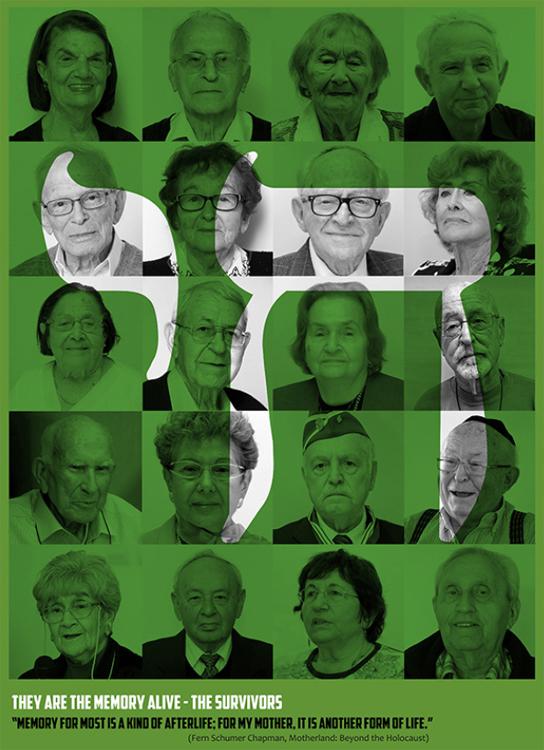
"The Memory Alive" is part of the "Holocaust - Lives, Memory and Resistance" trilogy, which is a collection dedicated to keeping the memory alive.
This specific work presents portraits of Holocaust survivors. It presents an undeniable and eternal testimony of genocide; a living memory that must be perpetuated by all as the shared responsibility of humanity. The importance of life and freedom.

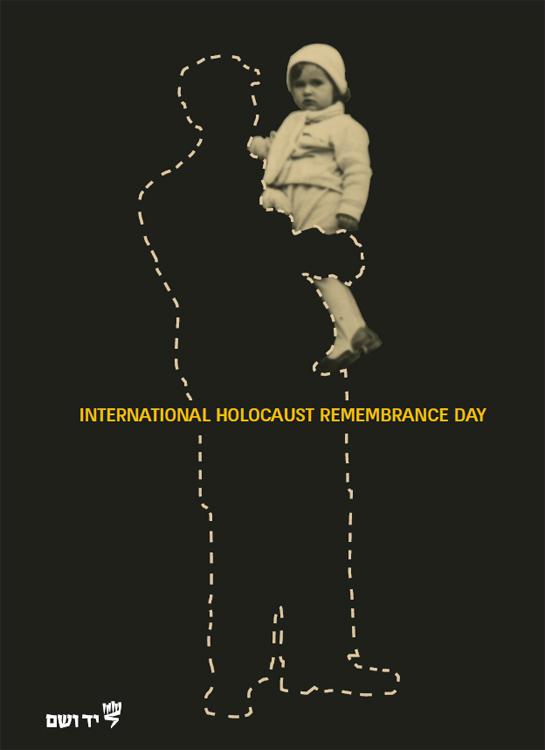
The artwork is based on an old family photo of my mother and her father. One arm embracing his only daughter, and a Star of David armband on the other.
The photo was taken in 1941, just two of months before he was murdered by the Nazis in the Aktsia in Krakow.

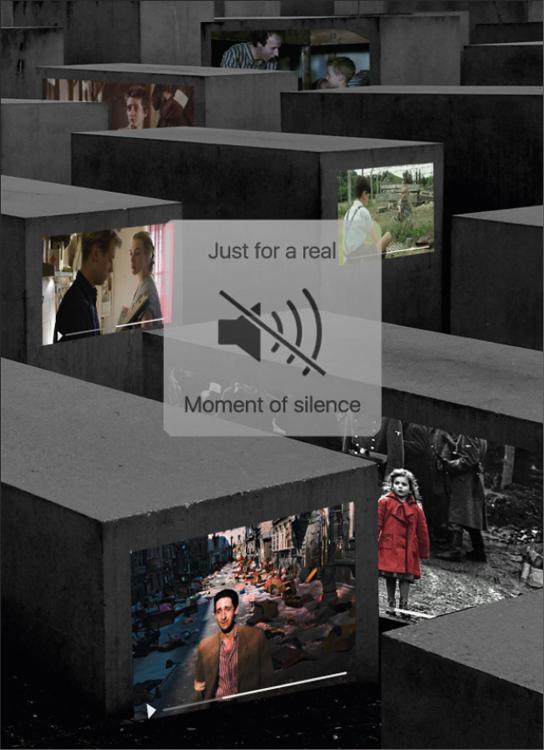
Most of us commemorate the victims of Holocaust by watching movies and reading fiction books about them from the phone displays. No doubt that it is better than nothing, however, what do all this stories have in common with the real history? How could the pictures and words created by the people of XXI century transmit the sufferings of the Holocaust victims? No way, I think. That is why sometimes it is better to escape from the visual and textual information flows and stop for a moment of silence.

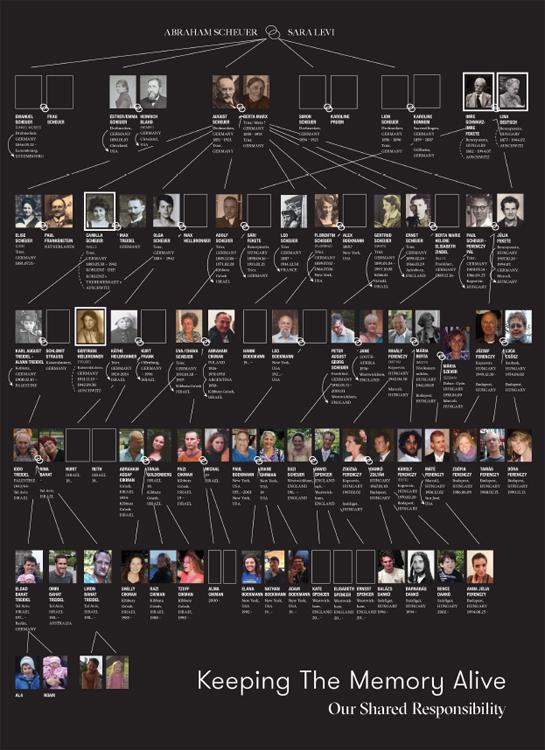
As a person born into a Jewish family I have found it really hard to find a sensitive, however meaningful and not too stereotypical approach to this topic. With my uncle and father I took part in a long-term project: to put a family tree together from all the photos and information we could gather. I think it doesn't need any longer explanation, how it tells many stories at once - just taking a look at the birthplaces and the places of death. Although it is visible on the geographical names I even put little graphics to signage the effects of the war on many lives. I've also found the title very fitting - placed pretty close to the last generation whose responsibility is the most important regarding our present.

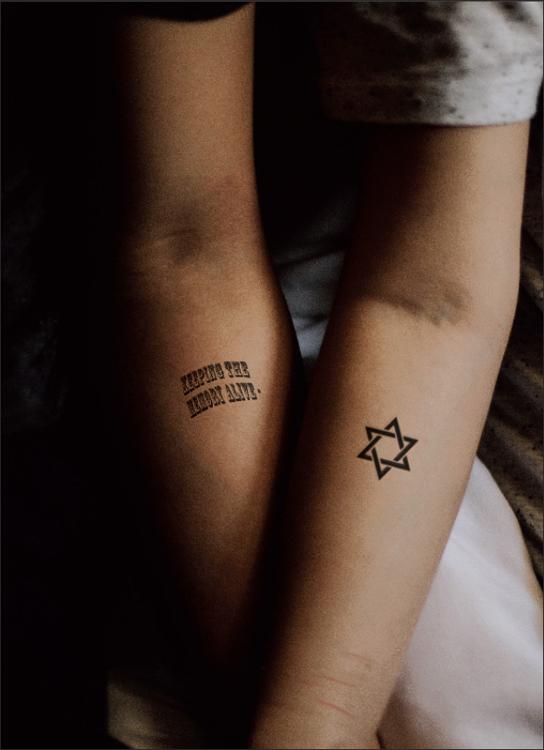
Tattoo is a symbolized memory from an event, thing or else. The Star of David is seen “Tattooed” on the right arm of a girl that has a wrist scar marks (indicates the failed attempt of suicide). The horror of Holocaust didn't just end years ago, but it still haunts the next generation. Be it their environment or even their family still had the ghastly memories of the Holocaust. The tattooed girl can’t bear the burden of the memories, but the man beside her stood beside her and give her support to live. Just like that, we can support the current Jews generation by give them moral support.

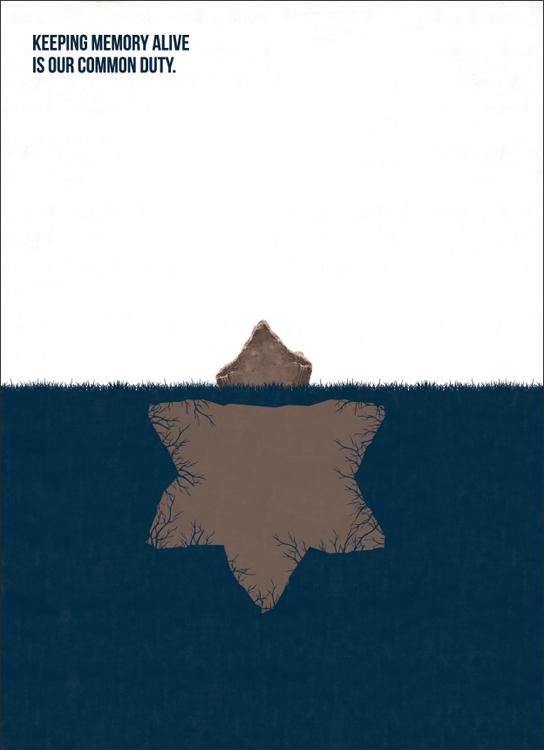
The Star of David pit symbolizes the depth of time in which the Jews are persecuted on Earth. The roots that grow from it are the image to the memory that wants to fill the put alive. The upper triangle of the star is a shattered tombstone that presents a typical anti-Semitic act that unfortunately happens even at this time.

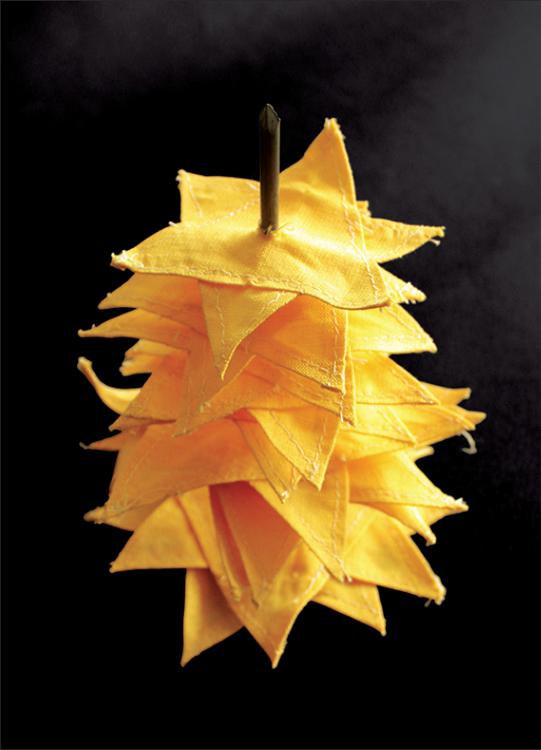
The Holocaust is a real contest in cruelty and inhumanity. I'm scared to think that it could happen. The "Star of David" is a symbol of the divine gift to people. How to hate people in order to symbolize the prisoners? Every star is a human life ... is a family... They are victims of inhumanity. The Holocaust is a disaster for the Jewish people. Everybody should know and remember about this horrible time.

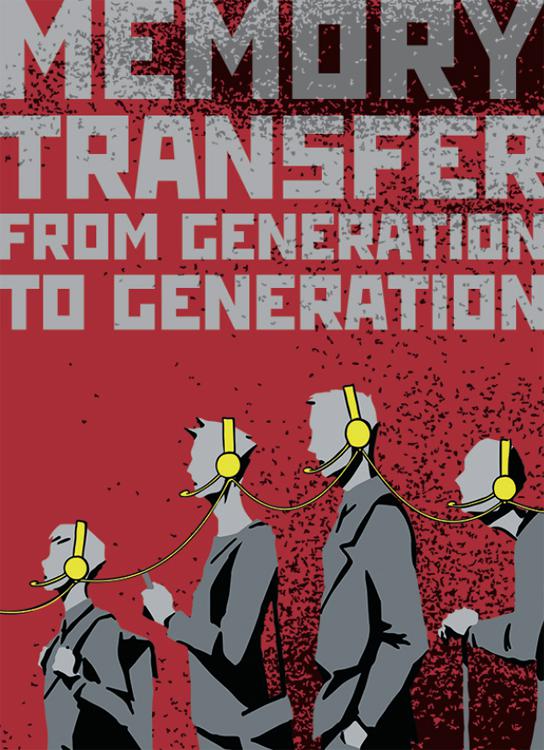
Preserving the memory of something is the transfer it to children and they to their children and so on. I reflected the idea of transferring the memory of the Holocaust to future generations in my poster. Black smoke symbolize the dark memory than is the Holocaust and the headphones symbolize the connection between generations.

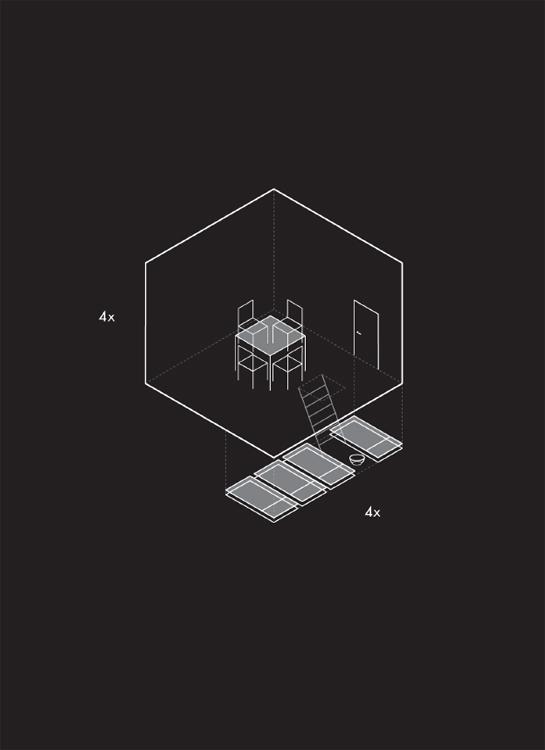
Description: Among the many horrific events of the Holocaust, I looked for something that anyone can relate to, since it happened with the everyday life of Jews and non-Jews. I wanted to reflect the inhuman conditions of living in hiding: the silence, the exposure to the goodwill of another family and household. Living in the shadow, trying to be non-existent. The graphics show a technical image of any imaginary but common household and hiding place, such as a practical how-to instruction to the changed life of the cities occupied by the Nazis, emphasizing the contrast between our sterile, indirect point of view on the subject and the sudden turn of events the citizens of the 1940’s had to face.

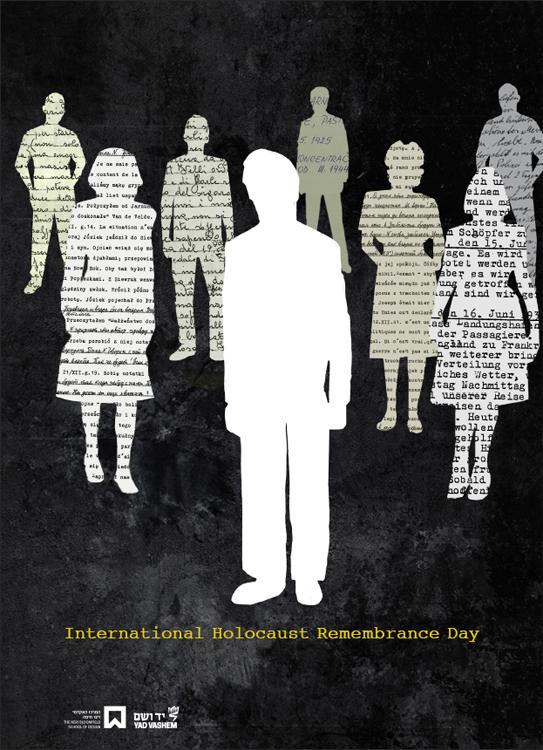
The poster represents the story of the individual in the Holocaust told by way of written narratives. The characters were created from written material and diaries in the collection of the Yad Vashem archive, and they document life before and during the Holocaust. The diaries tell the life stories of real people, each of whom was an entire world in itself.
The lives cut short by the Holocaust and the untold stories are innumerable.
The poster represents the survivors and those killed, whose stories remain untold; stories which are not documented in writing or in pictures.
It is of great significance to hear the family stories of Holocaust survivors who are still alive while we are still able to do this first hand, so that the Holocaust is not ever forgotten and so that the memory of the Jewish families and communities who lived in Europe will be preserved by humanity.

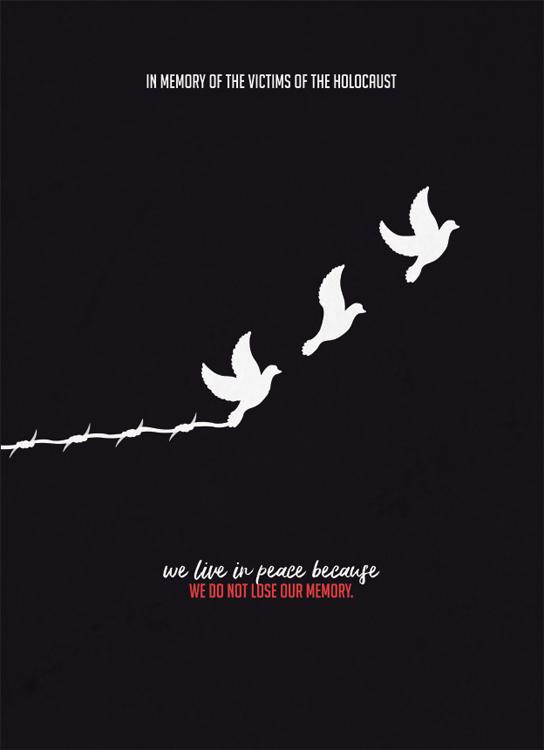
We live in peace because we do not lose the memory of those who lost it because of the Holocaust. The pigeons represent children- children and people who wanted to live in peace but were chained to be victims of the Holocaust. The next two represent the people who, after death, became free, free from suffering, from confinement...

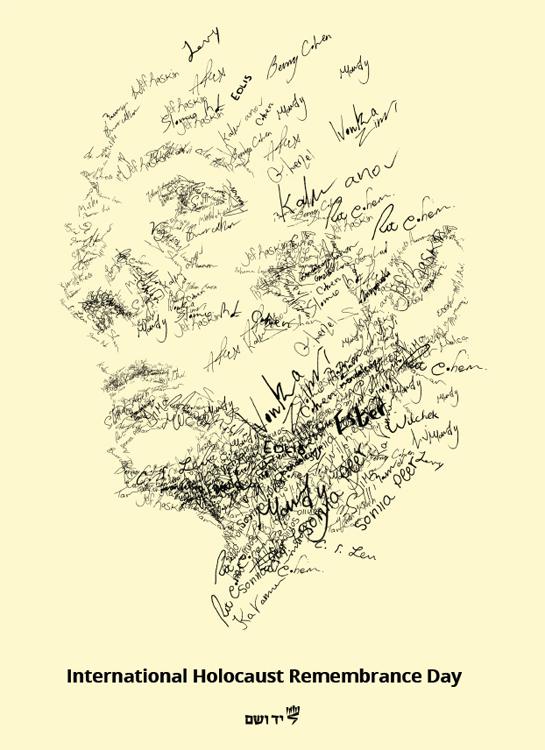
The poster is a collection of Holocaust victims handwritten signatures, forming a portrait. They all had their own personal signature which symbolizes their individuality - the face behind the signature.







